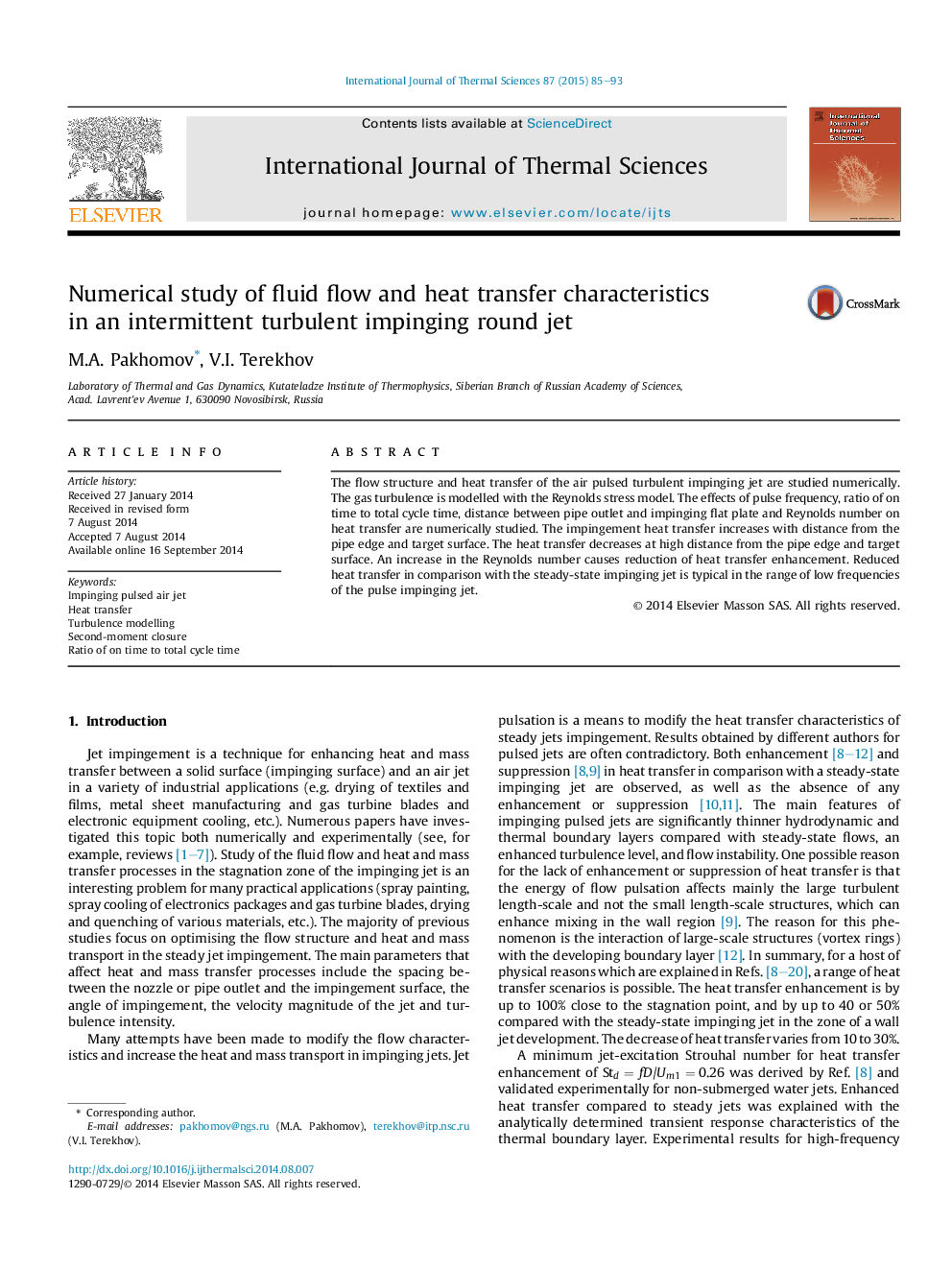| Article ID | Journal | Published Year | Pages | File Type |
|---|---|---|---|---|
| 668611 | International Journal of Thermal Sciences | 2015 | 9 Pages |
•Both enhancement and suppression of heat transfer is observed.•Heat transfer enhances for small distance from the pipe edge and target surface and decreases at high distance.•Increase in the Reynolds number causes the reduction of heat transfer enhancement.•Reduced heat is typical in the range of low frequencies.
The flow structure and heat transfer of the air pulsed turbulent impinging jet are studied numerically. The gas turbulence is modelled with the Reynolds stress model. The effects of pulse frequency, ratio of on time to total cycle time, distance between pipe outlet and impinging flat plate and Reynolds number on heat transfer are numerically studied. The impingement heat transfer increases with distance from the pipe edge and target surface. The heat transfer decreases at high distance from the pipe edge and target surface. An increase in the Reynolds number causes reduction of heat transfer enhancement. Reduced heat transfer in comparison with the steady-state impinging jet is typical in the range of low frequencies of the pulse impinging jet.
